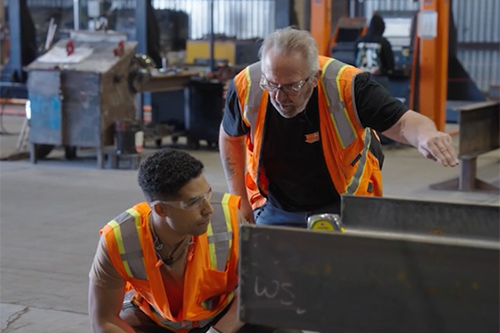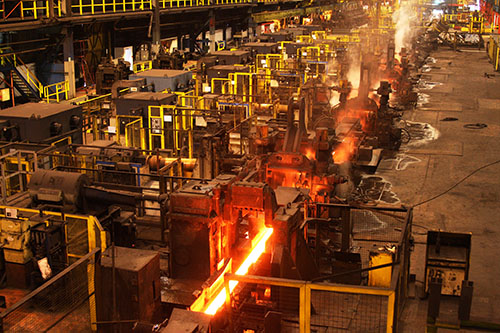Workforce Development
Successful Retention
Recruiting and onboarding a new staff member is not free–it costs valuable time and money. The Society for Human Resource Management (SHRM) reports that the average cost per new employee in the manufacturing sector is $3,497 and that it takes an average of 53 days to fill an open position. For a skilled trade, it can be even more due to qualified applicant scarcity.
Following through with strong retention policies is important in order to truly see a company’s return on investment. Understanding which investments translate to job satisfaction is key in reducing overturn.

It’s no secret that work-life balance is a priority for all workers across all demographics. Steel fabrication is a physical activity that must be performed in person, leaving no room for a hybrid work schedule enjoyed by other computer-based administrative or management roles. Fabricators can address this priority through an intentional worker-centered employee scheduling strategy.
A good working relationship with [one’s] boss is ranked second behind work-life balance for shift workers. The adage that people don’t leave bad companies, but rather bad managers, is still mostly correct, but people leave bad companies, too. Poorly run companies can allow for subpar management, making excuses for managers, especially when production doesn’t appear to suffer. Turnover rates are indisputable, however. When talent was abundant and folks regularly walked into a fabrication facility off the street looking for a stable job, rationalizing poor management practices was easier. Now, turnover affects the bottom line and leaves positions open for significantly longer periods, affecting production capacity.
Working in a convenient location ranks almost equally with a having good working relationship with one’s boss. This is directly tied to work-life balance. Recruiting from the communities immediately surrounding a facility is the easiest way to meet this need. Fabrication shops are often situated in more rural settings with lower cost of living. Steel fabrication companies can leverage this environment by focusing on local recruitment.
Comprehensive benefits rank highly as a factor for job satisfaction. This doesn’t reflect most fabricators’ experiences, however. Take-home pay tops the anecdotes about shop staff leaving one company to earn a few more dollars an hour elsewhere. Quick jumps from company to company reflect an overall lack of financial literacy in addition to confusion about career paths, especially for entry-level employees.
Investing in staff goes a long way in addressing this, but being intentional about training is paramount. Training staff using tools like AISC’s Fabricator Education Program helps employees progress in their careers while also producing more capable staff overall. It can provide a transparent matrix for career advancement and put more responsibility for career development on the employee. Adding to benefits packages can be meaningless to employees without their understanding of these key concepts. Educating employees, even during the interview process, can help them make more thoughtful career decisions.
Doing enjoyable tasks or projects is the final top job satisfaction metric. This is where the structural steel industry can really shine. The steel industry has the unique ability to point to a project in the community and say “I built that!” Steel fabricators need to lean into their own excitement and pride for the projects they build and the communities they serve when talking to prospects as well as lifelong employees. It’s rare for any other industry to have such an understanding of one’s own responsibility in creating structures that people live and work in and around every day.
 Invest in New Staff for Long-Term Success
Invest in New Staff for Long-Term Success
AISC's Fabricator Education Training Program is your newest resource to bridge the knowledge gap between recruiting and retention.
Designed as a robust supplement to in-person training, the program provides an easy way for fabricators to introduce basic concepts, like measuring, bolting, and torch cutting to new employees. Not only do these skills help trainees feel more involved and supported in their new roles, but they also help them progress into more specialized career paths that become available with experience.
Learning Resources
NASCC: The Steel Conference 2024

AISC Fabricator Education Training - Accelerated Onboarding
Presenters: Joel Landsverk, Mark Trimble, Amy Morrisey
NASCC: The Steel Conference 2024

Breaking the Boundary Between the Shop and the Office
Presenters: Charles Todd, Tony McGee, Stephanie Green
NASCC: The Steel Conference 2024

Talent Retention through Self-Reflection, Humility, and Belonging
Presenter: Shani Dellimore Barrax
NASCC: The Steel Conference 2023

Forging Employee Loyalty: Recruiting and Retention
Presenter: Chris Crosby

